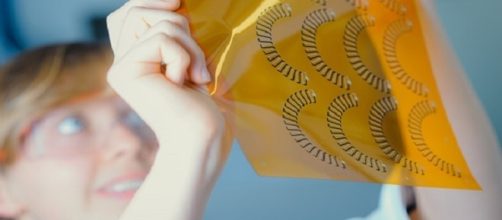Humans give off a lot of heat throughout a day, it is estimated that Men give off 120w worth of Energy and women, 97w of energy, in heat alone. What if there was a way to harness this energy? EU researchers are coming up with innovative solutions to health devices that could be as small as a plaster and have no power source, except what heat humans produce.
The material in question is called Thermoelectrics and it could harness waste heat. This exploits the Seebeck effect, which an electrical current is generated whenever the material exposed to a change in temperature.
Who is leading the project
the EU-funded project NanoCaTe (Nano-Carbon for versatile power supply modules) is led by Aljocha Roch, the Fraunhofer Institute for Material and Beam Technology (IWS). His pan-European team includes researchers from 12 different organisations hope to create devices that can be powered from the heat our bodies emit.
The project is targeting environmentally friendly materials, which are carbon-based, flexible, printable and can harness the energy from the Seebeck effect. The idea shows the innovation within the EU at the highest level. Roch said that he hopes the project can “develop new materials based on nanotechnology for thermoelectric and energy storage applications.”
The idea offers a great potential because of the heat that is wasted that could be applied to areas other than medical devices.
It is estimated that 50% of all available energy in Europe is wasted through heat. Roch states that “thermoelectrics offer a great opportunity for gaining back part of this.”
Energy storage and generation developments
Society needs to further develop energy storage solutions with issues arising in the future when the world needs to have transitioned onto renewable energies. Thermoelectrics is an opportunity to push forward and advance innovation in energy storage. Whilst the aim of the project is to create maintenance-free, autonomous sensor platform for health monitoring, it presents opportunities to develop other applications in energy generation.
Due to large problems of storing energy and reducing waste heat if the development of thermoelectrics is successful, it could lead to improved energy generation and storage devices.
Roch states that they are using nanotechnologies to create more efficient, flexible and environmentally friendly materials that would be used for the devices.
Current achievements within the pproject consist of development of a chip for power management that works well for low-powered applications. Plus, the development of new storage materials. But the next step with the project is to reduce the amount of rare earth elements that are typically used within thermoelectric generators. They are currently working on flexible material based on polymers, which are made from readily available materials.
The impact of such technology
The impact of the project could be varying in the grand to the minor, it could lead to better energy storage solutions that will benefit society and ease energy worries with environmentally friendly technology.
But it could also allow the creation of small devices that could stick on an individual like a plaster and monitor blood pressure and sugar levels without being invasive. T
he benefits are that the device is autonomous and doesn’t require any energy storage technology, such as batteries, or require any maintenance. The idea presents an opportunity to advance technology further and develop nanotechnology, as well as possibly creating better energy solutions and innovate the way we monitor personal health.

